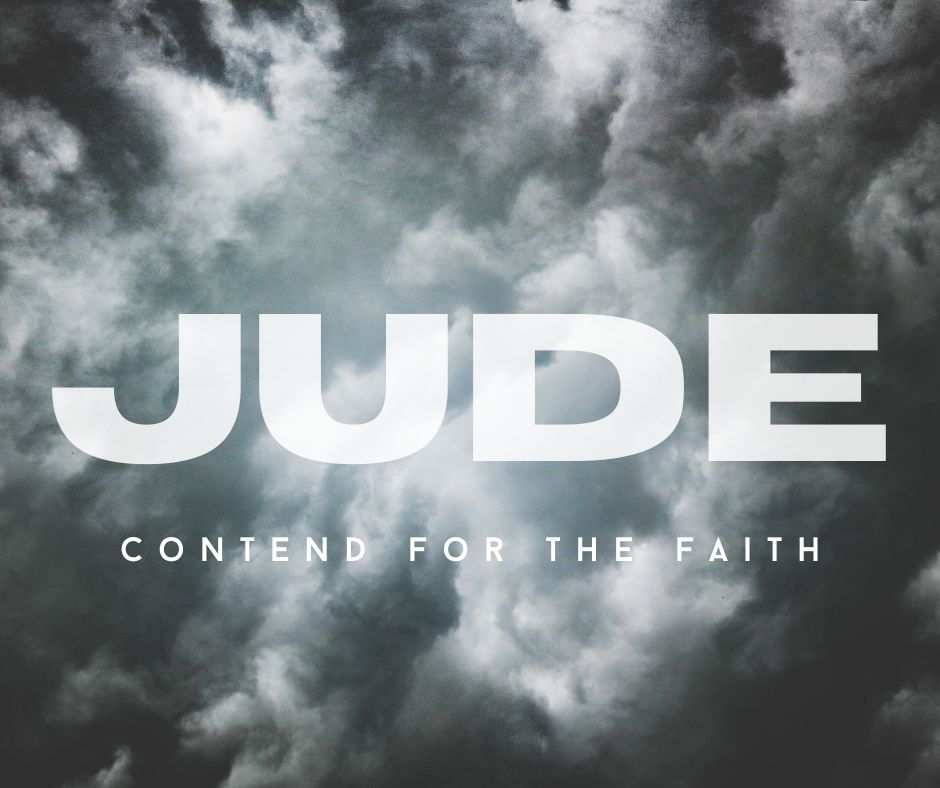Introduction
Introduction
The most important question any person needs to ask is, “who do you believe Jesus is?” How you answer this one question is a matter of (eternal) life and death. Many questions have little impact on our lives, such as your favorite cereal. However, this question has enormous consequences in everyone’s life. The Gospel of Mark seeks to ask that same question. The opening verse explains who Mark, the author, believes Jesus is, The Son of God.
“A man who was merely a man and said the sort of things Jesus said would not be a great moral teacher. He would either be a lunatic — on the level with the man who says he is a poached egg — or else he would be the Devil of Hell. You must make your choice. Either this man was, and is, the Son of God, or else a madman or something worse.” CS Lewis
There is no neutral ground. He is either Lord or something else. The Gospel of Mark shows many people who encounter Jesus who need to answer the exact question, and it is written so that we might also ask the same question and have an answer.
I. Author
Every single gospel account is autonomous. In the body of the text, they do not write their name. However, since the early Christian church (2nd C), Mark is believed to be written by John Mark. Papias, the bishop of the Church in Hierapolis, recorded what he had heard from an older friend,
“Mark, having become the interpreter of Peter, wrote down accurately whatever he remembered of the things said and done by the Lord, but not however in order.”
Some scholars have disputed this claim but with little evidence to refute it, and no other plausible author has been suggested.
Mark is believed to be John Mark who is mentioned without introductions in the Bible (Acts 12:12, 25; 13:5, 13; 15:37; Col 4:10; Phm 24; 2 Tim 2:11; 1 Pet 5:13). Although some have suggested, Mark was not an eyewitness of the ministry of Jesus Christ (although he could have had some references to himself, cf Mark 14:14, 14:51). Mark is believed to write the Gospel of Mark from Peter’s eyewitness account. The same relationship Paul had with Timothy is the same type of relationship Peter had with Mark (1 Pet 5:13). You can see the similarities in the sermon Peter preached in Acts 10 compared to the outline of the Gospel of Mark (See table below). You can also see the similarities of themes found in the Gospel of Mark; Christ’s power and authority coupled alongside his suffering as a servant, these two themes are predominate in 1 and 2 Peter.
| Acts 10:36-40 | Gospel of Mark |
| “good news” (vs. 36) | “The beginning of the good news” (Mark 1:1) |
| “God anointed Jesus of Nazareth with the Holy Spirit” (vs. 38) | The coming of the Spirit on Jesus (Mark 1:10) |
| “beginning in Galilee (vs. 37) | The Galilean Ministry (1:16-8:26) |
| “He went around doing good and healing all who were under the power of the devil” (vs. 38) | Jesus’ ministry focuses on his power and authority. |
| “We are witnesses of everything he did… in Jerusalem” (vs. 39) | The ministry in Jerusalem (Ch 11-14) |
| “They killed him by hanging him on a cross” (vs. 39) | Focus on the death of Christ (Ch 15) |
| “God raised him from the dead on the third day” (vs. 40) | “He has risen! He is not here” (Mark 16:6) |
II. Audience
One of the greatest scholarly increases in the last century has been the study of the Gospels, mainly synoptic Gospels (Matthew, Mark, and Luke). This has produced a variety of approaches to how one looks and understands each gospel. One of the biggest questions’ scholars have tried to address is which gospel came first? For a long time, the church believed Matthew was the first gospel (hence why it is first in the NT). However, scholars have pointed out that all three synoptic gospels share similar content to one another. This has been called the synoptic problem. 97% of what Mark writes can also be found in Luke and Matthew; 80% of Matthew can be found in Luke and Mark, whereas 35% of Luke’s gospel is unique to Luke. Many scholars now believe that Mark was the first of the four gospels to be written.
The other question is, when the gospel was written? Again, this has many differing perspectives. Some say as early as 40 AD, while others say in 70’s AD. We have some evidence of papyrus fragments that are dated around the 50’s (Mark 6:52-53, 4:28, 12:17). However, some have suggested this could be fragments of a ‘Q’ document, which is a lecture in itself. Others have suggested a later date, e.g., late 50’s early 60’s, because Paul does not reference this in his letters. Again, this all depends on how you answer other questions (i.e., Q document).
This brings us to the main question in this section. Who did Mark write the gospel for? This question can be helpful in understanding the epistles and the gospels, but we should not put a large amount of weight on this question. In an epistle, it explains who they are writing to. However, we do not get that same information in the Gospels. Some have believed Mark wrote the gospel while he was in Rome, to Romans. The gospel uses many phrases and words that have Latin origins (Military, Financial). However, this does not mean he was in Rome at the time. The Roman empire was spread throughout the land, and terminology was also widespread. Mark also has some geographical comments that make it sound like he did not know the area, e.g., he calls it the Galilean Sea, not Lake. We will discuss this at a later date.
Although you could argue that Mark wrote the Gospel for Romans while he was in Rome, this does not really alter any interpretation of the gospel. The one main question any reader must answer is, who Jesus of Nazareth is.
III. Outline
When we come to books in the Bible, we are quick to look at it through our own culture and make some assumptions about how the book was written. This can be helpful when we read letters, or any Gospels, prophecy, etc. However, sometimes we can seek to find information that is hard to pinpoint. One of these examples is outlining the book of Mark. If we are to believe the comment from Papias who says Mark wrote for Peter “but not however in order.” There are many ways to divide any book, especially Mark. His fast pace of writing makes it seem that the gospel took place in a matter of months rather than spread out over the years. You could divide the gospel of Mark into two parts (1-8, and 9-16). The pivot of the book is Peter’s confession in Mark 8:27-30. One commentator said that Mark is the passion narrative with extended introductions. Within these two halves, it becomes harder to divide. I personally that the approach of Peter in Acts 10:36-39 as the outline of the book (See Table above). This outline is geographically based, the first half focuses on Jesus ministry in Galilee, and the second half focuses on his ministry in Jerusalem. In the first half, Jesus displays his power and authority while telling people not to tell anyone about himself. In the second half, Christ reveals his true purpose of suffering as the promised Messiah.
- Prologue (1:1-13)
- Galilean Ministry
- Preaching, Power, and Prayer (1:14-5:43)
- Persecution (6:1-8:26)
- Peters Confession (8:27-30)
- Jerusalem Ministry
- Road to Jerusalem (8:31-10:52)
- Jerusalem Conflict (11:1-13:37)
- Death and resurrection (14:1-16:8)
IV. Themes
Son of God
The opening verse begins with a clear statement, “Jesus Christ, the Son of God.” In Mark 15:39, the centurion turns and says, “Truly this man was the Son of God!” The title is known to the readers of the gospel because verse one begins to lookout or hear for this title to be used. The phrase (Son of God or beloved Son) is used six times in the gospel and is at critical points in Christ’s life; baptism (Mark 1:11), Power of demonic spirits (Mark 3:11, 5:7), Transfiguration (Mark 9:7), and his death (Mark 15:39). Mark’s Christology is clear that Christ was the Son of God. Psalm 2 is known as a Messianic Psalm pointing towards the Messiah, twice it refers to the Messiah as God’s son (Psalm 2:7, 12).
Secretive Servant
Quite often in the Gospel, Jesus commands people not to tell others about him (Mark 1:43, 3:12, 5:43, 7:36, 8:30, and 9:9). This is known as the “Messianic Secret.” Christ clearly explains that they are to be silent about Christ until after the resurrection (Mark 9:9). The misconception of what the people of Israel thought Christ was coming to do and what he did were two separate ideas. They thought he would come in power and authority (which is when he told them to be silent) to overthrow the political powers of the day. They saw the Messiah as a military leader. When he explained what he was coming to do, the disciples, did not understand him (Three times). He told them that they should remain silent until after his resurrection, when everything would make sense.
Suffering Servant
Although the majority of the audience of the gospel would have been Gentiles, Mark still shows that Christ is the promised Messiah prophesied in the Old Testament. Right from the very beginning, God promised that one was to come who would crush the head of the Serpent (Gen 3:15). The Messiah was the one to come who would be the prophet that Moses spoke of (Deut 18:15), the Priest after the order of Melchizedek (Ps 110:4), and the King who would rule forever, out of the stump of Jesse (Is 11:1, 10). Christ comes with power and authority (Ch 1-8). However, he comes as the one who suffers for his people (Mark 8:31, 9:12). The people of Israel thought the Messiah would come as a military leader; however, he comes as a suffering servant. Not to save Israel from political leaders but to save them from their sins.
Conclusion
The Gospel of Mark is the action movie of the Gospels, because of the fast pace which it progresses through the narrative from one story to the next or one place to the next. The word ‘immediately,’ is used 42 times in the Gospel of Mark and only used 12 other times in the New Testament. The short sixteen chapters show us the ministry of Jesus Christ on earth. We see His mighty power over demonic spirits and the elements of nature. We also see his ministry of preaching and prayer that often gets overlooked yet is one of his most important ministries. However, we see the Son of God with power and authority humble himself even to the death on the cross. We see crowds follow him and reject him. We see religious leaders plot to destroy him. We see outcasts and sinners realize their need for him. We see disciples follow him, deny and betray him. However, the question is not who other people say Jesus Christ is. The number one question to ask yourself is, “Who do you say Jesus Christ is?”





